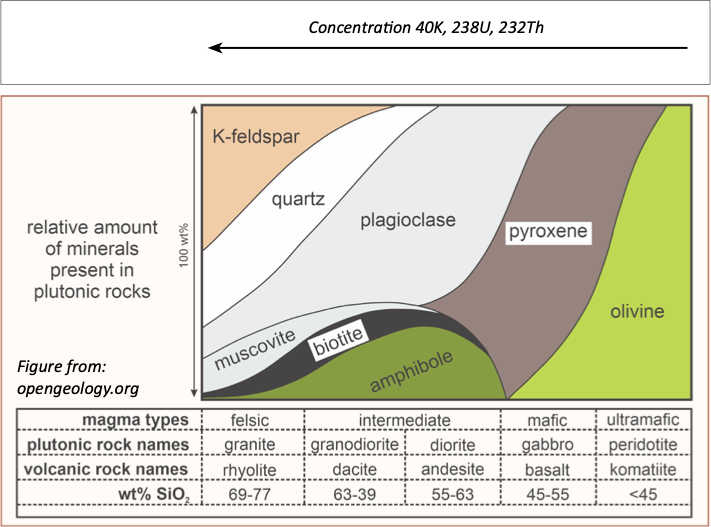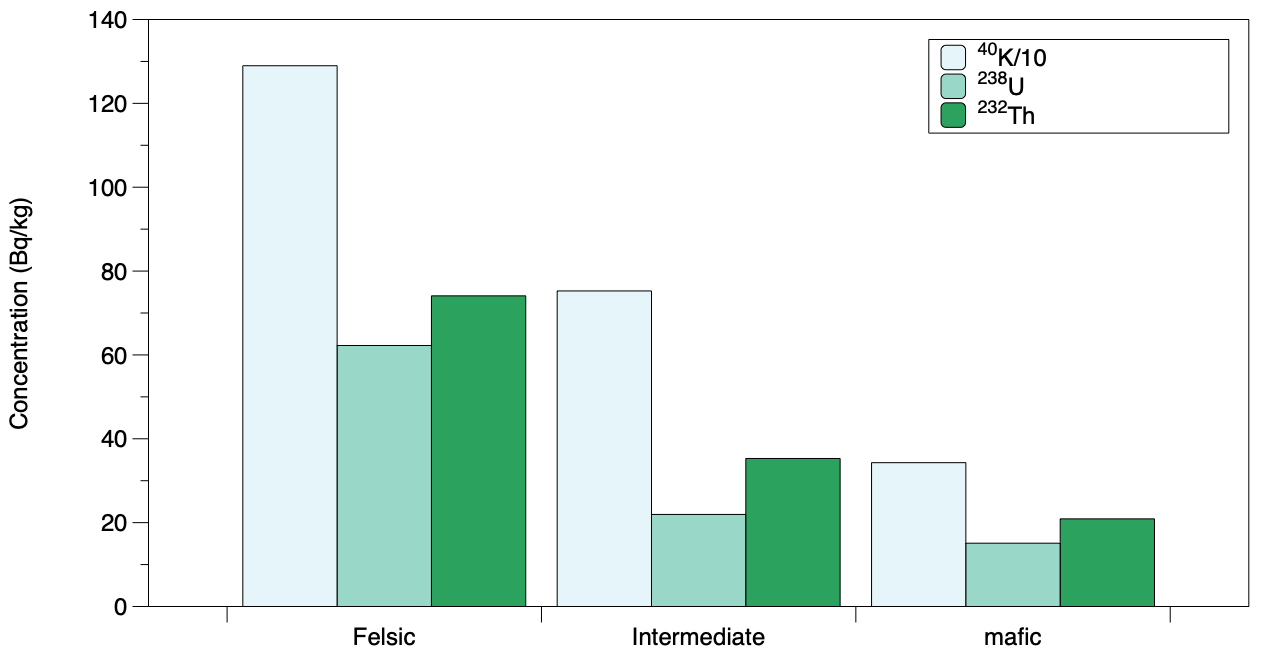Vulcanic and plutonic rocks
Rocks can be formed in various ways, each method resulting in a different type of rock. The four main types of rocks are magmatic, volcanic, sedimentary, and metamorphic.
Magmatic rocks are formed from magma deep within the Earth's crust. One example of a magmatic rock is granite. These rocks often have large crystals due to the slow cooling process.
Volcanic rocks, on the other hand, are formed from magma that erupts from a volcano. Basalt is a common example of a volcanic rock. These rocks have a fine-grained texture due to the rapid cooling at the Earth's surface.
Sedimentary rocks are formed from the breakdown and accumulation of other rocks and minerals. Sandstone is an example of a sedimentary rock. These rocks are composed of layers of sediment that have been compacted over time.
Metamorphic rocks are formed through the transformation of pre-existing rocks under conditions of high pressure and temperature. Slate is a well-known example of a metamorphic rock. These rocks often have a distinct foliated texture due to the alignment of minerals during the metamorphic process.
The formation process and composition of a rock determine its name. For example, a rock with a felsic mineral composition that is formed deep within the Earth's crust is called granite. However, if the same rock is formed at the Earth's surface, it is called rhyolite.
The Streckeisen diagram is a useful tool for classifying magmatic rocks based on their formation process and composition. One commonly used parameter is the quartz content (silica), which distinguishes between felsic (high in SiO2) and mafic (low in SiO2) rocks. The quartz content is also frequently used to differentiate between different rock names.
It is worth noting that felsic rocks generally have higher concentrations of radionuclides compared to mafic rocks. For instance, basalt, a mafic rock, has a low radionuclide content. This is confirmed in various studies e.g. https://www.researchgate.net/publication/257785960_Natural_radioactivity_in_basement_rocks_and_stream_sediments_Sharm_El_Sheikh_Area_South_Sinai_Egypt_Radiometric_levels_and_their_significant_contributions, Comparison between natural radioactivity levels andgeochemistry of some granitoids in western Turkeyof some granitoids in western Turkey, https://opengeology.org/petrology/02-igneous-rocks/ and references on eartwhise.
There is a correlation between quartz content and radionuclide concentration in rocks.

The concentrations of radionuclides increases with SiO2 content of plutonic and vulcanic rocks.
The phenomenon described above is also evident in the analysis of radionuclide concentrations in different rock samples. The concentrations of radionuclides were measured in felsic, intermediate, and mafic rocks in a laboratory set-up by the Medusa Institute. The measurements of felsic rocks were based on 23 samples of rhyolite and granite, while the measurements of intermediate rocks were based on 9 samples of porphyry, diorite, and granite. The measurements of mafic rocks were based on 3 samples of basalt, labradorite, and olivine.

Various samples of felsic, intermdiate and mafic rocks have been measured by the Medusa Institute on the concentrations of radionuclides. This graph shows average concentrations. For reasons of presentation, the concentration of 40K is divided by 10.
The relation between composition of rocks and concentration of radionuclides means that maps of radionuclide concentration can be used to measure differences in the composition of plutonic and volcanic rocks. The correlation between quartz content and radionuclide concentration holds relevance in geological mapping and vulcanological research. By studying the radionuclide concentrations in volcanic rocks, scientists can gain insights into the underlying magma composition and the processes occurring within the Earth's crust.
